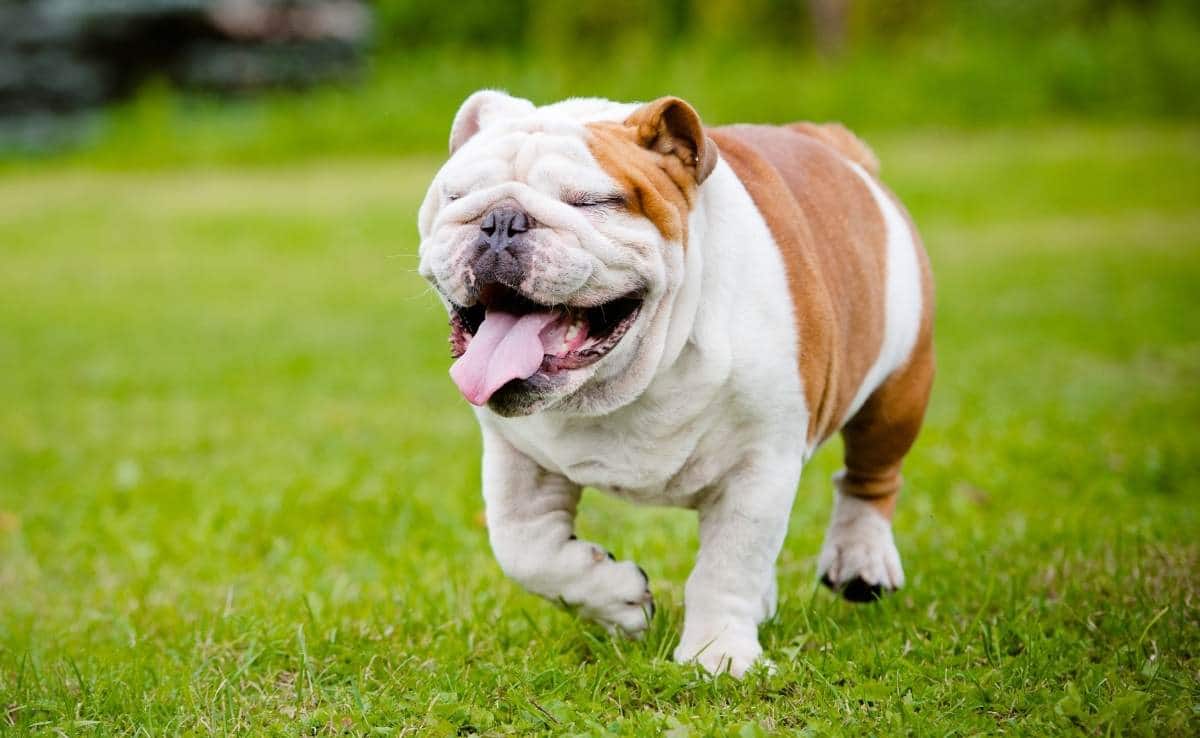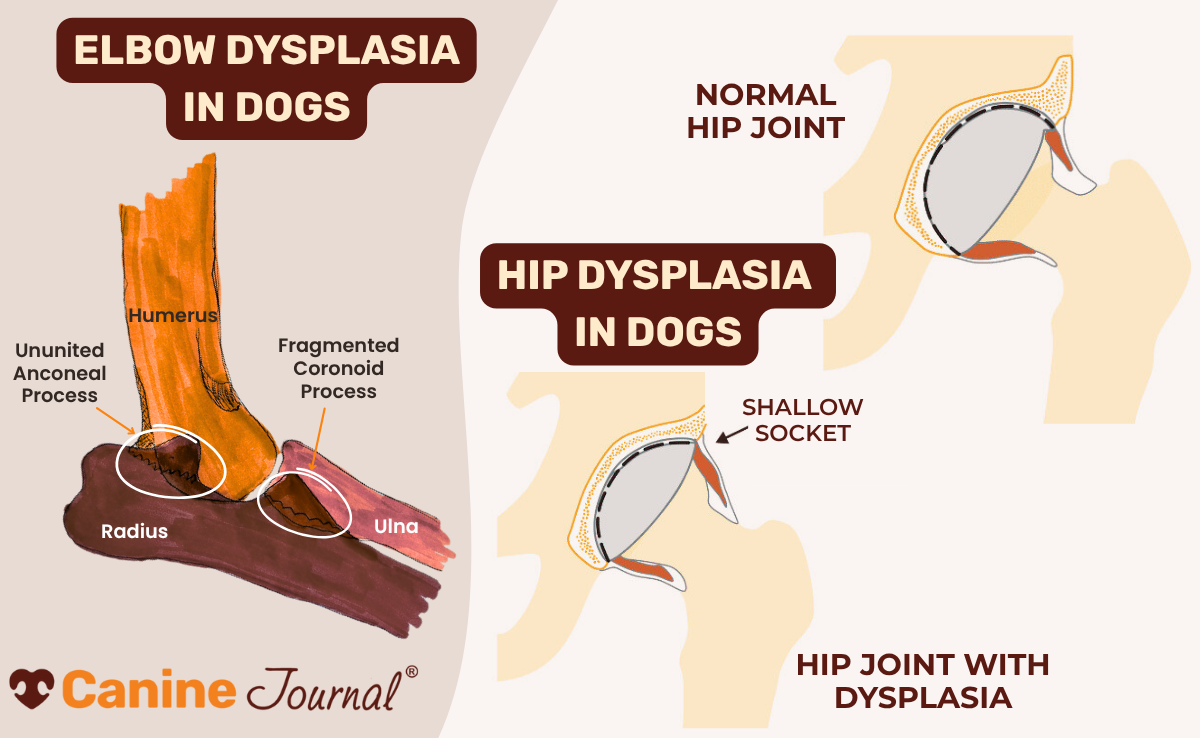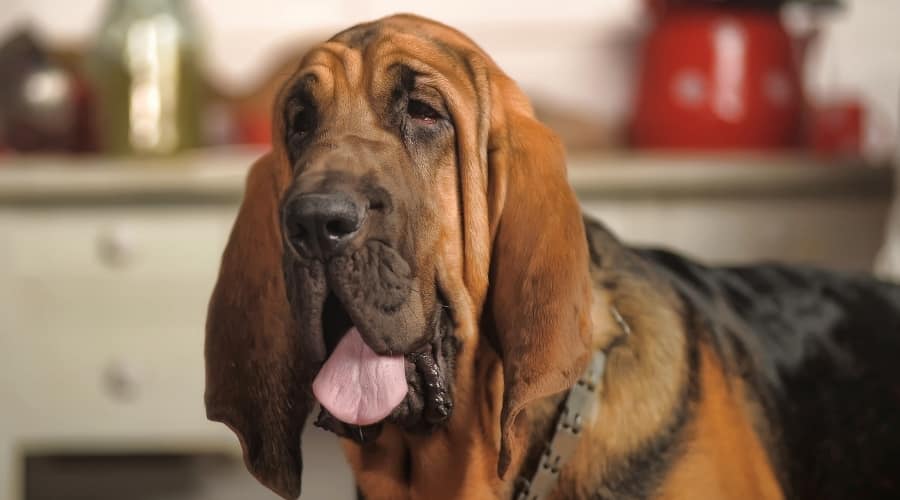Is Your Bulldog At Risk? 8 Common English Bulldog Health Issues You Shouldn’t Ignore
When you purchase through links on our site, we may earn a commission. Here’s how it works.
English Bulldogs are one of the most popular breeds in the U.S., but their signature appearance comes with a long list of health challenges. Due to decades of selective breeding, Bulldogs are genetically prone to respiratory issues, joint disorders, skin problems, and more.
Table of Contents
In this guide, we cover the most common health problems affecting Bulldogs, including symptoms to watch for and how to support your dog’s long-term wellbeing.

Planning Ahead For Vet Bills
English Bulldogs are prone to chronic and costly health conditions, including breathing disorders, skin infections, and joint problems. Vet bills can add up quickly, especially when surgery or long-term treatment is involved.
Pet insurance can help you manage expenses and avoid tough financial decisions in an emergency. It’s best to enroll your Bulldog while they’re young, before any conditions are considered pre-existing.

8 Common English Bulldog Health Problems
A 2022 study by the Royal Veterinary College found that English Bulldogs are twice as likely to have certain health conditions compared to other breeds, especially problems related to their flat-faced anatomy.
To better understand this breed’s unique challenges, we consulted Dr. Rebecca MacMillan, BVetMed MRCVS, a practicing veterinarian who frequently treats Bulldogs.
“I always strongly recommend that all English Bulldog owners invest in good pet insurance from an early age so that they can easily access the appropriate treatment for their pet when they need it,” says Dr. MacMillan.
Below are the most common health conditions affecting Bulldogs, along with signs to watch for and tips on managing their care.
1. Skin Problems
Skin issues are among the most common reasons English Bulldogs visit the vet. Their deep facial folds and wrinkled bodies may be adorable, but they create the perfect environment for bacteria and yeast to thrive.

“I see English Bulldogs regularly in my clinic,” says Dr. MacMillan. “They often come to see me because of their recurrent skin problems. Many of these dogs have underlying allergies but also other issues like extreme facial folds. This wrinkled skin is moist and warm, providing the ideal place for bacteria and yeasts to multiply.”
Bulldogs are also genetically prone to atopic dermatitis, a chronic condition triggered by environmental allergens such as pollen, dust mites, grass, and mold. Food sensitivities are another common cause of itching and irritation.
These skin folds, particularly around their faces, lead to frequent bouts of skin fold dermatitis and other skin infections. However, cleaning your pup’s skin folds can go a long way to preventing infections from developing. We recommend using Vetnique Labs Dermabliss Medicated Wipes regularly.
Allergy Symptoms
These symptoms often signal an allergic reaction or underlying skin infection:
- Excessive scratching, licking, or chewing
- Red and inflamed skin
- Papules or pustules (pimple-like lesions)
- Dry or flaky skin
- Patchy fur loss
- Itchy ears
- Swollen face or paws
Diagnosis & Treatment
Skin issues often require a combination of treatments, depending on the underlying cause.
- Regularly cleaning skin folds with medicated wipes (e.g., Vetnique Labs Dermabliss Medicated Wipes) can help prevent infection
- Your vet may recommend allergy medications, topical treatments, or a prescription diet
- Allergy testing may be used to identify environmental or food triggers
Consider An At-Home Dog Allergy Test
Some owners also try at-home dog allergy tests, which analyze saliva or hair samples to screen for sensitivities. Results can help guide further conversations with your vet.

2. Brachycephalic Obstructive Airway Syndrome (BOAS)
Bulldogs are one of the most affected breeds when it comes to brachycephalic obstructive airway syndrome (BOAS), a condition caused by their flat faces and compact skulls. According to the Humane Society Veterinary Medical Association, 45% of Bulldogs show clinically significant signs of BOAS.

“Most of the bulldogs I examine also have varying degrees of brachycephalic obstructive airway syndrome (BOAS),” says Dr. MacMillon. “Their noisy breathing and constant panting are a symptom of this. Sadly, these dogs have multiple deformities that affect their breathing, including narrow slit-like nostrils, an overlong soft palate, and a narrow trachea (windpipe). Where possible, I try to refer these dogs for surgery to help improve their quality of life.”
BOAS Symptoms
Signs may range from mild snorting to severe breathing difficulty.
- Noisy breathing
- Snuffling
- Snoring when relaxed or sleeping
- Coughing or raspiness
- Reverse sneezing
- Exercise intolerance
- Heat sensitivity
- Gagging or retching
Diagnosis & Treatment
BOAS often progresses with age, so regular vet monitoring is essential.
- Mild cases: Managed with weight control, limited exercise, and keeping your dog cool and calm
- Severe cases: Surgery may be recommended to widen the airways and improve airflow
Author’s Note: Based on a DNA test I conducted for my dog, Tiny, he is approximately 13% English Bulldog and has a genetic risk for BOAS. I can attest to the breathing issues—he snores, snuffles, and reverse sneezes regularly. Thankfully, because he’s a mix, his symptoms are fairly mild.
3. Heat Stroke
Due to their flat faces and breathing difficulties, English Bulldogs are particularly susceptible to heat stroke. Their compromised airways make it hard to pant efficiently, which is a dog’s primary way of cooling down.

Even mild heat or moderate exercise can put Bulldogs at risk, especially in warm or humid weather.
Heat Stroke Symptoms
Signs of heat stroke can appear suddenly and escalate quickly.
- Excessive panting
- Rapid breathing
- Dry, sticky gums
- Lethargy
- Seizures
- Vomiting or diarrhea
- Collapse
- Loss of consciousness
- Disorientation or confusion
Diagnosis & Treatment
Heat stroke is a medical emergency. If you notice these symptoms:
- Move your dog to a cool, shaded area immediately
- Offer small amounts of cool water
- Use a damp towel or gently hose your dog down with cool (not cold) water
- Call your vet right away
Veterinary treatment typically includes IV fluids, oxygen therapy, and close monitoring of body temperature to ensure optimal health. To prevent future episodes, avoid exercise during hot weather and never leave your dog in a parked car.
4. Obesity
While their stocky build is part of their charm, extra weight can seriously impact a Bulldog’s health. Obesity puts added stress on the heart, joints, and lungs—all areas where this breed is already vulnerable.

“Most of the English Bulldogs I encounter are overweight, which puts extra pressure on their airways, heart, and joints,” says Dr. Rebecca MacMillan, BVetMed MRCVS.
Carrying excess weight increases the risk of chronic conditions like diabetes, arthritis, heart disease, liver and kidney disease, and certain cancers. It also worsens breathing issues related to BOAS.
Obesity Symptoms
Signs your Bulldog may be overweight include:
- Lack of a visible waist when viewed from above
- Difficulty feeling ribs without pressing through fat
- Heavy breathing or panting after light activity
- Reluctance to exercise or play
- Sluggishness or reduced energy
- Trouble getting up or climbing stairs
Diagnosis & Treatment
Your vet can assess your Bulldog’s weight using a body condition score and help set a healthy target.
- Feed a portion-controlled, high-protein diet
- Limit treats and high-fat foods
- Add short, low-impact walks and gentle playtime
Not Sure If Your Dog Is Overweight?
Check out my article on overweight and obese dogs for tips on how to tell and what to do if he’s not at his ideal, healthy weight.
5. Orthopedic Diseases
English Bulldogs are genetically predisposed to orthopedic conditions, especially elbow and hip dysplasia. These joint abnormalities cause the bones to fit improperly, leading to pain, stiffness, and long-term damage.

Even Bulldogs without diagnosed dysplasia are still at risk for developing arthritis due to their compact frame and limited mobility.
Orthopedic Disease Symptoms
Watch for these signs of joint pain or mobility issues:
- Pain or discomfort during exercise
- Lameness or limping
- Stiff legs or a bunny hop–like gait
- Difficulty getting up
- Muscle loss in the legs
- Decreased interest in physical activity
Diagnosis & Treatment
Your vet will likely use X-rays to confirm joint abnormalities and determine the severity.
- Mild to moderate cases may be treated with anti-inflammatory medications, joint supplements, weight management, and physical therapy
- Severe cases might require surgical intervention to improve mobility and reduce pain
Maintaining your Bulldog’s healthy weight and incorporating low-impact exercise can help reduce joint stress over time.
6. Eye Problems
Due to their skull shape and shallow eye sockets, English Bulldogs are at high risk for several eye disorders. Their large, protruding eyes make them especially prone to injury, irritation, and chronic infections.

The three most common eye problems in Bulldogs are:
Cherry Eye
Cherry eye occurs when the tear gland in the third eyelid prolapses and protrudes from the corner of the eye. It appears as a pink or red mass and often recurs. Most cases require surgical correction to maintain the gland in its proper position.
Dry Eye (Keratoconjunctivitis Sicca)
This chronic condition is caused by inadequate tear production, leading to inflammation of the cornea. Treatment typically involves long-term use of tear-stimulating drops prescribed by a veterinarian.
Entropion
Entropion is a hereditary condition in which the eyelids roll inward. This causes the eyelashes to rub against the cornea, resulting in irritation and, in some cases, corneal ulcers. Surgery is typically required to correct eyelid positioning.
Eye Problem Symptoms
Many eye conditions in Bulldogs share similar signs:
- Eye sensitivity
- Squinty eyes
- Repeated blinking
- Bloodshot or cloudy eyes
- Yellow or green discharge
- Pink or red tissue bulging in the corner of the eye (cherry eye)
If you notice any of these symptoms, schedule a vet visit promptly. Early treatment can prevent permanent damage and preserve your dog’s vision.
7. Heart Defects
English Bulldogs are genetically prone to a congenital heart condition called pulmonic stenosis. This defect occurs when the pulmonic valve, which controls blood flow from the heart to the lungs, develops abnormally and becomes too narrow.

In mild cases, dogs may show no symptoms and live a normal life. However, moderate to severe cases can restrict blood flow and lead to serious complications, including heart failure if left untreated.
Heart Defect Symptoms
Symptoms of pulmonic stenosis typically appear in more severe cases.
- Exercise intolerance
- Fatigue
- Collapse
- Irregular heartbeat (arrhythmias)
Diagnosis & Treatment
Your veterinarian can diagnose pulmonic stenosis using imaging tools, such as echocardiograms. Treatment depends on severity:
- Mild cases: May require no treatment beyond monitoring
- Moderate to severe cases: Often managed with beta blockers or corrective heart surgery
If your Bulldog shows signs of fatigue or collapse during activity, contact your vet for evaluation.
8. Cancer
Like many breeds, English Bulldogs are at risk for cancer, but they are particularly prone to mast cell tumors and lymphoma. These cancers can develop quickly, and early detection is critical for improving outcomes.

Mast Cell Tumors
Mast cell tumors are the most common form of skin cancer in dogs. They often appear as small lumps or bumps on or just under the skin and may look harmless at first.
- Always have new or unusual lumps checked by your vet
- If caught early, surgery is often curative
Lymphoma
Lymphoma affects the lymph nodes and lymphatic system. It tends to progress quickly and may cause a range of systemic symptoms.
Lymphoma Symptoms
- Swollen lymph nodes
- Lethargy
- Decreased appetite
- Weight loss
- Swelling in the face or legs
- Increased thirst and urination
Diagnosis & Treatment
Your vet may recommend a biopsy or imaging to confirm the diagnosis. Standard treatment for lymphoma in dogs is chemotherapy, which can slow the progression and improve quality of life, though the disease is typically fatal over time.
Average Costs For English Bulldog Health Issues
English Bulldogs are known for chronic and complex health conditions, many of which can be costly to treat, especially if surgery or long-term care is involved. The following averages are based on Embrace Pet Insurance claims for this breed.

- Pulmonic Stenosis: $1,000-$7,000
- Elbow dysplasia: $1,500-$4,000
- Skin Fold Dermatitis: $300-$2,500
- Entropin: $300-$1,500
- Gastric Dilatation Volvulus (Bloat): $1,500-$7,500
Frequently Asked Questions
Here are some questions our readers ask most often about English Bulldog health problems. If you don’t see yours here, ask us in the comments.
What Is The Life Expectancy Of An English Bulldog?
The average life expectancy of an English Bulldog is 8 to 10 years. However, several factors impact every pup’s lifespan, including genetics, overall health, and lifestyle.
What Do English Bulldogs Usually Die From?
Another study of English Bulldogs in the U.K. by the Royal Veterinary College reported that the leading causes of death are heart disease, cancer, and brain disorders, such as brain tumors and spinal cord disorders.
Why Do English Bulldogs Have So Many Health Issues?
Decades of selective breeding have contributed to the multiple health problems that English Bulldogs and several other brachycephalic breeds face.
An alarming 2016 study at the UC Davis School of Veterinary Medicine found that the breed lacked the diversity in its gene pool to make much-needed health improvements, suggesting that crossbreeding was the only way to save the breed.
The Bulldog Club of America (BCA) maintains that it is “dedicated to preserving the breed and to continuing to work to improve the health of the dogs our members breed.” For example, the BCA has established a foundation to provide funds to support medical research to identify and remedy the causes of the breed’s underlying diseases. It also encourages breeders to conduct health screenings.
How Can I Help My Bulldog Stay Cool In The Summer?
Avoid outdoor exercise during peak heat, keep your home air-conditioned, and use cooling mats or damp towels indoors. Always have fresh water available and watch for early signs of heat stress.
Can Bulldogs Swim?
No, English Bulldogs are not natural swimmers. Their dense bodies and short snouts make it difficult to keep their heads above water, so they should always be supervised near pools or open water.
Do English Bulldogs Need A Special Type Of Bed?
Yes. Orthopedic or memory foam beds can help relieve joint pressure, especially for Bulldogs with hip or elbow dysplasia.
Avoid high beds they must jump onto, and choose one with supportive bolsters for comfort.
What’s The Best Diet For English Bulldogs?
Feeding Bulldogs the healthiest diet possible can help keep disease symptoms at bay and boost their immune systems to fight off their risk for infections. See our top picks for the best dog food for English Bulldogs in all life stages. You may also want to check out our reviews of the best dog food for weight loss and the best dog food for allergies if these are health issues your pup faces.
What health problems has your Sourmug faced? Share in our comments.



